[Part 04]
[Benton Bradberry’s 2012 book, “The Myth of German Villainy” is a superb, must-read, revisionist look at how the German people have been systematically, relentlessly and most importantly, unjustly vilified as the arch criminal of the 20th century. Bradberry sets out, coolly and calmly as befits a former US-Navy officer and pilot, to show why and how the German people have been falsely accused of massive crimes and that their chief accuser and tormenter, organized jewry is in fact the real party guilty of monstrous crimes against Germans and the rest of the world.
In Part 04, the background behind and implementation of organized jewry’s New York and European banker funded and organized takeover of Czarist Russia through its “Russian Revolution” of 1917 is detailed. Although Germany was bogged down on the Western Front, it achieved victory over Russia on the Eastern front. In the resulting chaos Czar Nicholas II abdicated and the jew Alexander Kerensky headed up a “Provisional Government” that then abolished all restrictions on jews throughout Russia. This allowed an invasion of some 90,000 exiled revolutionary jews to flood back into Russia, forming the heart of the jewish Bolshevik revolution.
The origin of Ashkenazi jews is described with the controversial view that they have their origins in Khazaria. Ever since the Russian Empire took control of areas of Poland, Ukraine and other areas of Eastern Europe the jews were mainly, legally confined to the area known as the “Pale of Settlement“, as the Russian government regarded the jews as “a perpetual menace to the continued well-being of the Russian State.” Jewish hatred and exploitation of the Russian people resulted in cycles of “pogroms” against jews by local people, further fueling jewish sense of grievance and their subversion towards the state.
During the 19th century jewish population growth rose rapidly resulting in over 2 million jews emigrating from Russia and Eastern Europe to the United States and Western Europe, spreading with them the twin evils of Zionism and Communism. In the US the jew Jacob Schiff, one of the wealthiest bankers in the world, helped finance Japan’s 1905 war with Russia. The failed “Russian revolution” of 1905 was also financed by jewish banks.
“Success” for organized jewry came with 1917 revolution whereby jews, who comprised less than 2 percent of the Russian population, now had total control of every branch of the government as well as the armed forces under Lenin and Trotsky. The “White Army” was defeated by the “Red Army” as jewish bankers provided the Reds with unlimited funding whilst refusing and blocking funding to the Whites.
The author ends this part with:
“Proof of the Jewish nature of the Russian Revolution and of the preponderance of Jews in the Bolshevik government, as well as their role in the Communist revolutions which swept Europe afterwards, is irrefutable.”
In Part 05 the reign of terror unleashed on the Russian people following this jewish takeover will be detailed — KATANA.]
NOTE: The author has very generously given me permission to reproduce the material here — KATANA.
The Myth of
German Villainy
by
Benton L. Bradberry
Contents
[Clicking on a link in the Contents here will take you to that Part, in a separate post]
[Part 01]
Chapter 1 – The Myth of Germany as an Evil Nation
Germany’s Positive Image Changes Overnight
[Part 02]
Chapter 2 – Aftermath of the War in Germany
The Versailles Treaty
Effect of the Treaty on the German Economy
Was the War Guilt Clause Fair?
Did Germany Really Start the War?
[Part 03]
Chapter 3 – The Jewish Factor in the War
Jews at the Paris Peace Conference
Jews in Britain
[Part 04]
Chapter 4 – The Russian Revolution of 1917
Jews and the Russian Revolution
Reason for the Russian Pogroms Against the Jews
Jews in the Government of Bolshevik Russia
[Part 05]
Chapter 5 – The Red Terror
Creation of the Gulag
Bolsheviks Kill the Czar
Jews as a Hostile Elite
The Ukrainian Famine (Holodomor)
[Part 06]
Chapter 6 – The Bolshevik Revolution Spreads Throughout Europe
Jews in the Hungarian Revolution
Miklos Horthy Saves Hungary
Jews in the German Revolution
The Spartacist Uprising in Berlin
Jewish Bolsheviks Attempt to Take Italy
Jewish Bolsheviks Attempt to Take Spain — The Spanish Civil War
Czechoslovakia in Danger of Communist Takeover
The Comintern’s Aim? World Domination!
[Part 07]
Chapter 7 – The Nation of Israel
History of the Expulsion of Jews
[Part 08]
Chapter 8 – Jews in Weimar Germany
Jews Undermine German Culture
[Part 09]
Chapter 9 – Hitler & National Socialists Rise to Power
The 25 Points of the National Socialist Party
[Part 10]
Chapter 10 – National Socialism vs. Communism
National Socialism
Jews Plan Marxist Utopia
[Part 11]
Chapter 11 – Jews Declare War on Nazi Germany
Text of Untermeyer’s Speech in New York
The Jewish Persecution Myth
Effect of Boycott on the German Economy
Jewish Exaggerations are Contradicted by Many
[Part 12]
Chapter 12 – The Nazis and the Zionists Actually Work Together for Jewish Emigration out of Germany
The Nuremberg Laws – 1935
The Zionist Movement
[Part 13]
Chapter 13 – Life in Germany Under Hitler
Night of the Long Knives
1934 Annual Nazi Rally at Nuremberg
Hitler Revives the German Economy
Hitler Becomes the Most Popular Leader in the World
[Part 14]
Chapter 14 – Hitler Begins Reclamation of German Territory
Chapter 15 – The 1936 Olympics
[Part 15]
Chapter 16 – “Anschluss”. The Unification of Austria and Germany
Austrian Economy Revived
Austria’s Jews
[Part 16]
Chapter 17 – Germany Annexes the Sudetenland
[Part 17]
Chapter 18 – War with Poland
The Polish Problem
Hitler’s Proposal to Poland
Kristallnacht
German-Polish Talks Continue
Jews Influence both Roosevelt and Churchill
British and American Political Leaders Under Jewish Influence
Roosevelt’s Contribution to Hostilities
Lord Halifax Beats the War Drums
Germany Occupies Bohemia and Moravia
Roosevelt Pushes for War
Anti-war Movement Becomes Active
Poles Murder German Nationals Within the Corridor
[Part 18]
Chapter 19 – The Phony War
Russo-Finnish War
The Norway/Denmark Campaign
German Invasion of Denmark and Norway
Churchill Takes Chamberlain’s Place as Prime Minister
[Part 19]
Chapter 20 – Germany invades France Through the Low Countries
The Phony War Ends.
Churchill the War Lover
The Fall of France
Hitler Makes Peace Offer to Britain
[Part 20]
Chapter 21 – The Allied Goal? Destruction of Germany!
[Part 21]
Chapter 22 – Germany as Victim
Rape and Slaughter
Jewish Vengeance
The Jewish Brigade
[Part 22]
Chapter 23 – Winners and Losers
Chapter 4
The Russian Revolution of 1917
Introduction
Germany actually won World War I on the Eastern Front, though that aspect of the war is less well known than the war on the Western Front, which Germany lost. The war on the Eastern Front began on August 17, 1914 when Russia invaded East Prussia with a full scale offensive. The Russian attack was launched a little more than two weeks after Germany had crossed into Belgium in its drive on France, which marked the beginning of the war. To meet the Russian invasion of East Prussia, Germany immediately diverted large numbers of soldiers from the Western Front. The massive German troop transfer from the Western Front to the Eastern Front is one of the reasons the Western Front bogged down in stalemate so soon after the war began. Germany’s Schlieffen Plan called for a lightening attack through Belgium, into France, to knock France out of the war, whereupon the German army would wheel around and take on the Russians on the Eastern Front. A two front war was to be avoided at all cost.
When Germany’s attack on France did not produce the expected quick victory, the German Army dug trenches and assumed a defensive position until the war on the Eastern Front could be resolved. Germany fought a defensive war on the Western Front with reduced forces through most of the war while aggressively engaging the Russians on the Eastern Front. Germany was now fighting the two front war the Schlieffen Plan had been designed to avoid.
[Add. image — The “Schlieffen Plan.” (click image to enlarge)]
Russia and Germany clashed in a series of bloody battles on the Eastern Front, in which Russia came out second best in all of them. In East Prussia the Russian armies were crushed by German forces at both the Battle of Tannenberg and the Battle of Masurian Lakes. In the disastrous Battle of Tannenberg, only 10,000 of General Samsonov’s Russian Second Army managed to escape. The remainder of his 150,000 troops were either killed or captured. General Samsonov then shot himself rather than face the humiliation of his disastrous defeat. The Russians were then pushed completely out of East Prussia by the victorious Germans.
Russian forces fared better in their invasion of the Austro-Hungarian province of Galicia by winning an important victory at the Battle of Lemberg (now Lvov), but the German army came quickly to the rescue and drove the Russians back into Russia. In just six months time, the Russian Army had gained nothing, yet lost over 2 million men, either killed or captured. German troops then seized the initiative by advancing into Russian held territory, seizing Warsaw in early August, 1915, Brest Litovsk on August 25, and Vilna, Lithuania on September 19. These battles resulted in the loss of another million Russian soldiers.
The heavy losses sustained in these battles literally wiped out the old Russian officer corps and nearly destroyed the entire pre-war Russian army. Military commanders were thereafter forced to rely on inexperienced and reluctant conscripts, most of whom were simple peasants. The situation deteriorated to the point that Czar Nicholas II felt it necessary to take personal command of the Army, effective on August 22, 1915. Because of his lack of experience in military matters, the Czar was indecisive and vacillating, and managed only to exacerbate an already deteriorating situation.
[Add. image — Czar Nicholas II blesses Russian troops in 1915.]
German troops in East Prussia
Morale in the Russian army deteriorated rapidly. Soldiers began deserting the front and returning home in droves. These conscripted peasant soldiers refused to accept orders from their officers, and even shot their officers in many cases. They were not professional soldiers and had no feeling of commitment to either the army or to the war.
The German Army crosses into Russia, September, 1917
Russian soldiers flee advancing Germans
By January 1917, it was clear that Czar Nicholas had lost control of the situation in the field and that Russia was losing the war. Back home, food supplies were low throughout Russia, unemployment was high, and inflation was spiraling out of control, all a result of the war. Widespread strikes had shut down factories, throwing even more people out of work.
Leftist revolutionaries took full advantage of the chaos to incite the people to revolt. Street demonstrations were organized in which workers, peasants and soldiers demanded bread, redistribution of land, and an end to the war. “Workers Soviets (counsels)” were organized by the revolutionaries. The situation became so explosive that the Czar abdicated and a “Provisional Government” was put in his place, headed by Alexander Kerensky. Significantly, as a sign of things to come, Kerensky was a Jew. In March 1917 one of the first measures of the Provisional Government under Kerensky was to abolish all restrictions on Jews throughout Russia. This was to prove disastrous for traditional Russia, for it had the effect of opening any and all public offices to revolutionary Jews, which they quickly flooded into.
Alexander Kerensky, head of the new Provisional Government.
When the Provisional Government took power, the “Workers Soviets” (councils) remained in existence, so for a time there was a sort of duality of power. “Workers Soviets” were a Marxist Jewish creation, and their principle accomplishment was to immediately free all political prisoners and to lift the ban on political exiles to permit them to return to Russia. This brought some of the most radical, revolutionary minded leaders back into the capital city of Petrograd from Russian prisons, the great majority of whom were Jews. This was a momentous event for old Russia, the significance of which was not immediately recognized. By this invasion of revolutionary Jews, the Russian body politic was fatally infected, and old Russia was doomed. Altogether, some 90,000 exiles returned from all over Europe and America, and from as far away as Argentina. These 90,000 exiles constituted the heart of the approaching Bolshevik revolution. They were almost to the last man professional revolutionaries, and with few exceptions they were Jews. Stalin, Sverdlov, and Zinoviev were among the exiles who returned from Siberia. Lenin, Martov, Radek, and Kamenev returned from Switzerland. Trotzky returned with hundreds of his Yiddish brethren from New York’s Lower East Side. Until their return the revolution had been under the leadership of second string Bolsheviks who happened to be on hand. Now the elite with international reputations had returned and began to take charge.
Bolsheviks Take Control
This group, the “Bolsheviks,” overthrew the Provisional Government in October 1917, in what amounted to a Jewish coup d’état of the Russian government. Kerensky had wanted to gradually implement a mild form of socialism within a structure of democracy, but this was much too mild and much too slow for the Bolsheviks’ taste. Lenin and Trotsky wanted to completely remake Russian society, and they knew that that could only be done through violence. These men were Jacobins, and what they wanted was a French Revolutionary style “reign of terror.” One of the first acts of these Jewish Bolsheviks after seizing control of the government was to enact a law forbidding anti-Semitism, violation of which carried the death penalty.
Lenin addresses a crowd on a street in Petrograd (St. Petersburg). Leon Trotsky stands just to the right of the podium.
Jews and the Russian Revolution
The fact that Jews constituted the majority of the Bolshevik leadership in the Russian Revolution of 1917, as well as in the numerous Bolshevik revolutions that erupted throughout Europe afterwards, is carefully suppressed today. As a result, Jewish involvement has largely been erased from modern academic historiography. Contemporary historians today are virtually compelled, on pain of professional ruin, to support the view that not only did the Jews play no special role in Bolshevism, but that they were actually victimized by it. This, of course, is a cover-up and a contradiction of the actual facts. Statesmen and journalists of that time were well aware of the Jewish nature of the Russian Revolution, and that the revolution amounted to a Jewish coup d’état of the Russian state. It was also well known that the Bolshevik regime that came into power as a result of the revolution was made up mostly of Jews. Moreover, the Communist revolutions throughout Europe that soon followed the Russian Revolution were orchestrated by Jews whose goal was to do the same in other European countries that they had done in Russia ― that is, to overthrow existing regimes and replace them with Soviet Socialist Republics controlled by Jews. It is significant that in every single case where Communists managed to take control of a European country, however temporary, one of their first acts was to outlaw anti-Semitism and to lift all restrictions on Jews. To obtain the real facts of the matter, one only needs to read the newspapers, magazine articles, and books written at that time, all of which are now available on the Internet.
Two attempts were made by international Jewry to take control of the Russian government; the first in 1905, which did not succeed, and the second in 1917, which did. Both coup attempts were planned and organized by revolutionary Jews, both inside and outside Russia, and both attempts were financed by outside Jewish banking houses. To associate Jews with the Russian Revolution in any way is strictly taboo today, but to understand what actually happened in Russia during and after the revolution, and also to understand the impact of the revolution on other nations at the time, it is essential to understand the role Jews played, both in the revolution and in the Russian government thereafter, as well as in the Bolshevik revolutions throughout Europe which followed the Russian Revolution. It is also necessary to understand the nature of the mutual hostility which had long existed between the Czarist government in Russia and its Jewish subjects. It is necessary, as well, to understand the nature of the mutual animosity that Jews and the ordinary Russian people felt for each other. And finally, it is necessary to understand the vengeful enmity held by Jews throughout the world for the Czarist regime in Russia, and their relentless determination to one day bring it down.
Origin of East European Jews
At the end of the nineteenth century, the majority of the world’s Jews lived in Eastern Europe in a region designated by the Russian government as the “Pale of Settlement;” a region made up of Poland, Belarus, Ukraine and Lithuania, all a part of the Russian Empire, but not of Russia itself. Just how these Jews got there is an interesting question all its own. The answer is that they were always there. They did not immigrate in from someplace else, this was their native land.
These Jews were not the same as the Biblical Jews of the Holy Land. They were, rather, the descendants of the Khazar people who had lived since ancient times in the region between the Black Sea and the Caspian Sea which is today predominantly occupied by the country of Georgia. The Khazars converted en masse to Judaism during the late eighth century. There is no biological connection between these Yiddish speaking Khazar Jews and the ancient Semitic Jews of the Holy Land. The descendants of the Khazars are the Ashkenazi Jews of today. 85% of the world’s Jews today, and 90% of Jews who live in the United States are Ashkenazi Jews. Yiddish was a sort of Creole language which the Khazar’s developed and used in their trade and business dealings with Central Europe. Some say that Yiddish is a German dialect, but not quite. The grammatical structure is different from German, though about half of the words of Yiddish are German words. Numerous words in Yiddish are Kazarian in origin. Kagan, for example, a common Jewish last name is a Khazar word for “king.” The Jewish last name, “Kazan,” as in Elia Kazan, is a Khazar name.
Khazaria, home of the Khazars who are the ancestors of today’s Ashkenazi Jews. 85% of the world’s Jews today are Ashkenazis.
The Khazar people ranged widely over the steppes between the Black Sea and the Caspian Sea, north to the Ukrainian city of Kiev, and were a mixture of two ethnic types. According to Arthur Koestler, in his book, The Thirteenth Tribe, (1976) the southern Khazars tended to be a swarthy, Turkish-Mongol type, while the northern Khazars nearer to Kiev, tended to be blonde and blue eyed, or more European in appearance. Those two strains can be seen in the Ashkenazi Jews of today.
The Khazars adopted Judaism as their national religion at about the same time the Russians adopted the Greek Orthodox religion as their national religion. Both peoples went about their mass conversions in approximately the same way. The Russians brought in numerous Orthodox priests from Constantinople to help build churches and to teach the new religion to the Russian people. The Khazars, likewise, brought in numerous rabbis to teach Judaism to the Khazar people and to help them build synagogues. The Khazar Jews adopted the Talmud, the central text of mainstream Judaism, which incorporates Jewish law, ethics, philosophy, customs and Jewish history, and took the whole package as their own. They also adopted all Jewish holy days, as well as all the traditional Jewish rituals and ceremonies. In other words, they adopted Judaism in its entirety, including the Jewish custom of race purity, and forbidding marriage outside of Judaism.
These warlike people once ruled the entire region but eventually lost power and then settled in as a religious and ethnic minority amongst the Viking Russ and the Slavic people of Eastern Europe. The Jews of nineteenth and twentieth century Eastern and Central Europe were all descendants of the Khazars. These Khazar Jews, or Ashkenazi Jews, formed the largest ethnic minority in the Russian Empire, totaling 5.2 million according to the 1897 census. Almost all of the Jews of Europe, contrary to popular opinion, migrated into Europe from Khazaria in the East, not from Palestine or the Mediterranean.
Though concentrated in Eastern Europe, they also spread throughout Europe and formed small minority populations within the cities and towns of host countries, and formed a sort of “parasite/host” relationship with the majority Christian populations. They tended to establish themselves in “parasitic” occupations such as merchant, middleman, trader, and money lender, and avoided agriculture and labor intensive occupations. They also tended isolate themselves in closed communities which became know as “ghettos,” and they did not marry outside their race. These Ashkenazi Jews were characterized by high intelligence and highly cohesive social organizations with close cooperation and mutual support between themselves, usually at the expense of their non-Jewish “host” populations.
The Jews also had their own laws and code of ethics to govern their lives. The Talmud permits Jews to treat non-Jews differently than they treat fellow Jews. They are instructed to be fair and honest with each other, but are not required to be so with Gentiles. Consequently, they developed a reputation for sharp practice and for taking advantage of well meaning, unassuming Gentiles. Wherever Jews lived, they were invariably accused of being a “parasitic” people who created nothing of their own, but lived off the industry of their host populations.
Reason for the Russian Pogroms Against the Jews
At the turn of the twentieth century, most of the world’s Jews lived within the territory controlled by the Russian Empire. At that time, there existed some 650 anti-Jewish statutes as official law in Imperial Russia; deemed necessary to protect the Russian people from Jewish rapaciousness. In no other country in the world was anti-Semitism so deeply ingrained, from the lowest level bureaucrats and ordinary Russian soldiers who formed the Imperial Army, to the Russian Orthodox Church, the Government, and the Czar himself. Those who filled these organizations, and who therefore regulated and controlled the lives of the millions who fell under their authority, were nearly unanimous in their suspicion, fear, and outright hatred of Russia’s Jews. The Jews had a reputation for being mutinous troublemakers, as well as avaricious, aggressive exploiters of their Christian, Gentile host populations.
Because they perceived themselves as defenders of the Christian faith and protectors of the Russian people, the Czars had kept the Jews out of Russia since the Middle Ages. But after the partition of Poland in 1772, at which time the eastern part of Poland was ceded to Russia, most East European Jews became incorporated into the Russian Empire. Even more Jewish subjects were added when Catherine the Great annexed the Ukraine and Crimea. In order to deal with this new “Jewish problem,” the infamous “Pale of Settlement” was established in 1791. The Pale of Settlement was a region which began at the western edge of Russia, and included Poland, Lithuania, Ukraine, Belorussia and Bessarabia. This is where the “undesirables” of the Russian Empire, which included the Jews, were required to live. The Russian government regarded the Jews as “a perpetual menace to the continued well-being of the Russian State.”
This view of the Jews as perpetual troublemakers grew even stronger after the French Revolution of 1789 when the large Jewish role in bringing about that revolution became known. (The Jacobins who instigated the French Revolution were predominantly, if not entirely, Jewish. It was also the Jews who financed the French Revolution; men such as Benjamin Goldsmid and his brother Abraham Goldsmid, their partner Moses Mocatta and his nephew Moses Montifiore, all of London, along with Daniel Itsig and his son-in-law David Friedlander of Berlin, and Herz Cerfbeer of Alsace, among others.) The Czars were worried about the stability of the Russian Empire and worried about this Jewish tendency to foment revolution. The draconian restrictions on Jews were imposed in defense of Russia, not just to make life difficult for Jews.
Alexander II, a kindly and compassionate man by all accounts, came to the Russian throne in 1855 and began to implement fundamental changes in Russia, notably the emancipation of the serfs in 1861, but with the best of intentions he also lifted many of the restrictions on Jews. Jews considered “useful,” like merchants, doctors and some artisans were permitted to settle in Russia on a limited basis. Opening Russia’s borders to Jewish immigration, even on a limited basis, proved difficult to control, however, and Jews flooded into Russia in large numbers. The Jewish communities in St. Petersburg, Moscow and Odessa especially grew rapidly. Through their close, in-group cooperation, their emphasis on acquiring higher educations, and their pattern of working together to advance themselves and their fellow Jews at the exclusion of Gentiles, they soon began to dominate certain professions, such as medicine, journalism, the law, finance and entrepreneurship. Jews also gradually achieved monopolies over the liquor, tobacco and retail industries, as the Gentiles were elbowed out. This pattern of behavior created hostility among the Russian people, and a predictable wave of anti-Semitism then ensued. Jews were accused of creating a “state within a state” for the purpose of dominating and exploiting Russia.
A Jewish shtetl (town) in the Pale of Settlement.
Ashkenazi Jews in a shtetl in the “Pale of Settlement,” a large region which included Poland, Ukraine, Belorussia and Lithuania and Bessarabia. Ashkenazi Jews were the descendants of the Khazarians.
Konstantin Petrovich Pobedonostsev, who was a political advisor to both Alexander III and Nicholas II, wrote in a letter to the openly anti-Semitic writer Feodor Dostoyevsky:
“What you write about the Yids is completely just. They have engrossed everything, they have undermined everything, but the spirit of the century supports them. They are at the root of the revolutionary socialist movement and of regicide, they own the periodical press, they have in their hands the financial markets, the people as a whole fall into financial slavery to them; they even control the principles of contemporary science and strive to place it outside of Christianity.”
Despite the prosperity they were able to achieve in Russia, and the fair treatment accorded them by Russian Czars, the Jews began fomenting unrest, particularly labor unrest, and they involved themselves in revolutionary activities. The Jews formed the “Social Revolutionary Party,” for example, for the specific purpose of overthrowing the Czar.
Both Anarchism and Nihilism were Jewish movements. In 1881 Czar Alexander II was assassinated by a group of Jewish revolutionaries. Soon thereafter, this same group began a series of assassinations of other government or public officials. In 1901 they murdered the Czar’s Minister of Education; in 1902 they killed the Minister of the Interior; in 1903 the Governor of Ufa was assassinated; in 1904 the Premier of Russia was killed; in 1905 Grand Duke Sergei, the Czar’s uncle was killed. Then, in 1905 the Jews attempted a revolution to overthrow the Czarist government, though it did not succeed. In 1906 the Jews assassinated General Dubrassov. In 1911, the Jewish terrorist Mordecai Bogrov assassinated Prime Minister Peter Stolypin. He shot him in the back of the head during a gala in Kiev, which was also attended by the Czar. (Assassination of those who stand in the way of Jewish interests has a long tradition amongst the Jews. The Israeli MOSSAD carries out routine assassinations today. Five Iranian nuclear scientists have most recently been assassinated by the MOSSAD. See also, the movie ”Munich,” in which MOSSAD assassinations are carried out.)
These Jewish assassinations, as well as other Jewish revolutionary activities, so infuriated the new Czar, Alexander III, especially the assassination of his own father, that he issued the following statement:
“For some time the government has given its attention to the Jews and to their relations with the rest of the inhabitants of the empire, with a view of ascertaining the sad condition of the Christian inhabitants brought about by the conduct of the Jews in business matters. During the last 20 years, the Jews have gradually possessed themselves of not only every trade and business in all its branches, but also of a great part of the land by buying or farming it.
With few exceptions, they have as a body devoted their attention, not to enriching or benefiting the country, but to defrauding, by their wiles, its inhabitants, and particularly its poor inhabitants. This conduct of theirs has called forth protests on the part of the people, as manifested in acts of violence.
The government, while on the one hand doing its best to put down the disturbances and to deliver the Jews from oppression and slaughter, has also on the other hand, thought it a matter of urgency and justice to adopt stringent measures in order to put an end to the oppression practiced by the Jews on the inhabitants, and to free the country from their malpractices, which were, as is known, the cause of the agitation.”
The Czarist government ordered a crackdown, and one by one, most of these Jews were rounded up and brought to trial. Though more than justified, the Czar’s retaliation against these Jewish assassins produced the usual outcries of “anti-Semitism” and “persecution,” as well as predictions of “extermination,” which were then trumpeted throughout the international Jewish press. The Russian people eventually became fed up with the Jews, and a wave of pogroms spread throughout the Southwestern regions of Russia where Jews were most populous. More than 250 pogroms, varying in length and severity, occurred in 1881 alone.
These were for the most part, spontaneous attacks on Jews by ethnic Christian Russians, and not the work of the Czarist government.
These pogroms received extensive coverage in international Jewish magazines and newspapers at the time, with the usual sensational exaggerations and dire predictions of planned genocide. International Jewry’s desire to retaliate against Russia was extremely intensified by these breathless exaggerations and by the malicious propaganda attacks on the Czar. The truth is that it was the Russian people, themselves, who were behind the pogroms, not the Czarist government. The Czarist government even conducted an investigation to find out who was behind them, and did all it could to prevent them. The investigation concluded that the pogroms were the result of Jewish financial exploitation of the peasants and the accumulated resentment among the peasants as a result of it.
The Jews constantly fomented trouble of one kind or another throughout Russia. As already described, they assassinated Russian officials; they incited labor unrest by pitting workers against their employers; they organized demonstrations; and they made continuous attempts to stir up revolution. To contain this revolutionary activity the government began a policy of repression of the Jews in 1882 which continued right up to the Russian Revolution in 1917. In 1888, Alexander III began to push the Jews out of Russia, back into the Pale of Settlement. Jews were forbidden to buy or rent property in Russia. They were denied jobs in the civil service, and they were forbidden to trade on Sundays and Christian holidays. Nicholas II succeeded his father Alexander III in 1894, and he continued his father’s strict rules against the Jews. He felt the repressive rules were necessary to protect the Russian people against the schemes and intrigues of the Jews, and also to prevent public disorder. But he was unable to stop the pogroms against the Jews which were being carried out by ordinary Russian people. These seemed to erupt spontaneously on a regular basis out of hostility and hatred of the Jews, and could not be contained.
Jews Leave Russia for America
The Jews accepted no responsibility for any of this, but saw it instead as just more of the usual unjustified “persecution” of guiltless Jews by hostile Gentiles. As a result of this hostility and hatred, Jews saw the Russian Empire as an inhospitable and dangerous land for Jews. Their plight was made worse by an explosive population growth rate, the highest of any ethnic group in Europe, which further limited economic possibilities for them. There were too many Jews and too few opportunities for them in Russia. At the end of the nineteenth century they decided to leave Russia, en masse, for the “new world,” that is, the Unites States of America. Between 1881 and 1924, more than 2 million Russian and East European Jews immigrated to the United States ― the largest mass migration of Jews in history. A great number also spread out over Western Europe. The two great Jewish movements of Zionism and Communism had been developed and nurtured within the Pale of Settlement, and when they migrated to America, they took these two movements with them. Communism was introduced to America for the first time by these new immigrant Jews.
[Add. image — Jewish immigrants leaving Ellis Island, New York, 1915.]
The United States turned out to be everything they had hoped for. It proved to be the land of opportunity for Jews, with no constraints or restrictions on them of any kind. The American people had no experience with Jews, and therefore had formed no negative attitudes towards them. After becoming settled in the new world, mainly in New York City, they quickly began to fill up the universities; find positions in banking and finance; start up newspapers; and they began to flood into the professions. The German Jewish immigrants who had preceded them were already powerful in all of these areas and they gave their fellow tribesmen from Russia a hand up. By employing their usual methods of intense networking, in-group cooperation and mutual support, these new Jewish immigrants began to rise to positions of dominance in America.
Following their usual pattern, once ensconced in a position of power, a Jew will then invariably bring in only other Jews until all the non-Jews who preceded them are gradually displaced. By these methods, they soon came to dominate journalism, academia and particularly banking and finance.
But these nouveau riche “American” Jews still remained an integral part of the International Jewish Nation, and they were more than willing to use their new found wealth to support and defend the interests of international Jewry. Their visceral hatred of Russia remained a part of the Jewish psyche, which was only exacerbated by frantic stories of continued repression of their brethren who had remained in Russia. As their power and influence in America grew, they plotted and schemed about ways to use their power to undermine and destroy the Czarist government. Jewish bankers in both Europe and America were ready to provide any funding necessary to bring about the downfall of the Czar and his regime. Russian officials were well aware of this Jewish scheming against Russia, and frequently commented on the fact that Jewish power and influence in Western countries was directed at undermining Russia and the Czar.
The German born Jew, Jacob Schiff, one of the wealthiest bankers in the world, and head of the international bank, Kuhn Loeb & Co., based in New York, had a particularly virulent hatred for Russia and was determined to do all he could to bring down the Czar. In 1905, Russia and Japan went to war over control of Manchuria in Northern China. Schiff and his Kuhn, Loeb Bank floated a huge loan to finance Japan in the war, while at the same time, using his international banking influence to block funding of Russia. The result was a shocking Japanese victory. Japan defeated the Russian army at Port Arthur in Manchuria, and then sank the Russian fleet in the Battle of Tsushima in the waters between Korea and Japan. This was to be the first defeat of a European power by a non-European power, but it could not have been achieved without the backing and support of International Jewry.
The attempted Russian Revolution of 1905 was planned by Jewish revolutionaries, financed by Jewish banks, and staged to coincide with Russia’s war with Japan. The official Jewish Communal Register of New York City of 1917-1918 carried the following statement:
“The firm of Kuhn, Loeb and Company [Jacob Schiff’s bank] floated the large Japanese war loans of 1904-5, thus making possible the Japanese victory over Russia… Mr. Schiff has always used his wealth and influence in the best interest of his people [Jews]. He financed the enemies of autocratic Russia and used his influence to keep Russia from the money market of the United States.”
Financing the 1917 Revolution
Two great blocks of Jewish bankers; the London and Paris based Rothschilds with their extensive network of banks, and the so-called German-American bankers, under the control of Jacob Schiff, cooperated together to finance the Russian Revolution. Schiff, a German born Jew, was an international banker of Wall Street, closely allied with other German and American Jewish bankers, including the (German born) Warburgs of New York and Hamburg, the Guggenheims, the Hanauers, the Kahns, and others. The Warburgs, both in Germany and in the U.S., were actually related to Jacob Schiff. One was his brother-in-law and the other a son-in-law. Other International Jewish financiers allied with Jacob Schiff and the Kuhn, Loeb Bank included, the Westphalian-Rheinland Syndicate in Germany; the Lazare brothers of Paris; the Ginzburgs of Petrograd (formerly St. Petersburg), Tokyo and Paris; Speyer and Company of London, New York and Frankfurt am Main; and, significantly, the Nya Banken of Stockholm, Sweden, under a Swedish Jew, Olof Aschberg. These banking blocks were “international” in the truest sense; owned and operated by international Jews who were loyal to no nation except International Jewry.
In their mission to bring down the Czar, the two banking groups jointly financed a propaganda campaign against Czarist Russia which had the effect — as intended — of creating world-wide hostility toward the Russian Empire. This anti-Czarist propaganda campaign was propagated through and trumpeted by all the major newspapers throughout Europe and America, as well as through all other information media, almost all of which was under Jewish control. (They were to conduct this same kind of propaganda campaign, except on a much larger scale, against Germany after Adolf Hitler became Chancellor.)
As mentioned above, Jacob Schiff hated Czarist Russia and was especially active in attempts to undermine the Czarist government. But it was the Rothschilds who were behind the dethroning of Czar Nicholas II in 1917, after which a “Provisional Government” was established, with Prince Georgy Lvov as its Prime Minister, soon thereafter to be replaced by the Jew Alexander Kerensky (mother’s name — Nadezhda Adler). As mentioned previously, one of the first acts of the Provisional Government under Kerensky (March 16, 1917) was to abolish all restrictions on Jews throughout Russia.
Up to that time Jews had been barred from government jobs, but suddenly they were allowed to take positions in any available government office in Russia. With all restrictions against them removed, Jews quickly became active in every aspect of the Revolution, obtaining leadership positions in several political parties. Seeing opportunity for themselves, Jews in large numbers began to flood into St. Petersburg and Moscow from the shtetls in the Pale of Settlement, from Europe, and from America. (Shtetl is a Yiddish word meaning “town.” Shtetl life was depicted in the movie, “Fiddler on the Roof.”) These rural Jewish towns ― shtetls ― were spread throughout the Pale of Settlement, that is, Poland, Ukraine, Belarus, Moldavia, and Lithuania.
Now that the Czar was gone, Lenin and 32 other Bolsheviks, nearly all Jews, were brought into Petrograd by the German General Staff by train from Switzerland for the purpose of destabilizing the Russian government. The intent was to take Russia out of the war. Lenin had opposed Russia’s entry into the war from the beginning, and even called for ordinary soldiers to turn their guns against the officers who had led them into the slaughter.
Lenin and his entourage arrived at “The Finland Station” in Leningrad on April 16, 1917. The Germans were well aware of the Jewish character of this revolutionary movement and recruited a Jew, Alexander Helphand (who took the name of Parvus), to act as an intermediary between the German government and the Bolsheviks. Large sums of money were sent in to Lenin and the Bolsheviks by the German government through Helphand. Helphand was born in a shtetl in Belarus, got a PhD in economics, moved to Berlin and became an associate of the Jewish Communist revolutionary, Rosa Luxemburg. Lenin received funding from both the German government and international Jewish banks. With secret German funding, Lenin immediately went to work setting up some 41 newspapers and other periodicals in Russia, including the newspaper “Pravda,” which was to eventually become the official mouthpiece of the Bolshevik government, through which to trumpet the Communist line to the Russian public. Germany’s interest in funding Lenin, as stated above, was to take Russia out of the war. But the international Jewish bankers had another agenda. Their interest in funding Lenin was to bring down the Czarist government and replace it with a Jewish revolutionary government. Germany was later to learn that she had made a pact with the Devil. A member of the German General Staff later wrote:
“We neither knew nor foresaw the danger to humanity from the consequences of this journey of the Bolsheviks to Russia.”
It was Jacob Schiff and the Kuhn, Loeb Bank, together with the Warburg banks, both in America and in Germany, who engineered Trotsky’s return to Russia. Trotsky’s revolutionary activities were financed through the Nya Banken in Stockholm, Sweden, headed by the Jew, Olof Aschberg, who had close ties with Max Warburg and Jacob von Furstenberg, both Jewish bankers. A trust account was set up at Nya Banken into which millions of Kuhn, Loeb’s dollars were deposited. Nya Banken became known as “the Bolshevik Bank.” The Jewish ambassador from America to Sweden, Ira Nelson Morris, served as a virtual conduit between Kuhn Loeb in New York and Nya Banken in Stockholm. Ambassador Morris ostensibly represented American interests in Sweden, but as a Jew, he used his office to serve the interests of International Jewry.
Lenin
Trotsky
Trotsky and 267 Russian, Yiddish speaking Jews from the Jewish immigrant community in New York City made their way to Petrograd with Schiff’s help to join Lenin in the revolution. Numerous other New York Jews were to follow. Trotsky arrived on April 17, the day after Lenin’s arrival. Though Trotsky and the other Jews who came with him were not American citizens, they had obtained American passports which facilitated their re-entry into Russia. This was done by the intervention of the Jewish U.S. Supreme Court Justice, Louis Brandeis. Brandeis was very close to President Wilson, and he persuaded Wilson to direct the State Department to issue the passports. After arriving in Petrograd, Lenin and Trotsky joined forces. With the money provided by Jacob Schiff, combined with the money from the German government, Trotsky and Lenin organized an armed Bolshevik uprising. The Provisional Government was overthrown and on November 7, 1917 (October 25, according to the Russian calendar) a Soviet Socialist Republic was established. Trotsky soon took control of the Russian army and set about to reorganize it into the “Red Army of the Proletariat.” One of his first acts was to set up “soviets” (counsels) of soldiers for every detachment, battalion, regiment, and division in the army. The old Czarist officers were then purged out of the army. Eventually these “soviets” took the places of all the commanding officers and their staffs. This turned out to be unworkable and had a demoralizing effect on the army. To make matters worse, inexperienced Jewish officers filled the important vacancies left by the purged Czarist officers. Chaos reigned. This new Red Army was no match for the German Army and was unable to resist the German offensive of February, 1918, which finally took Russia out of the war.
Trotsky and the Red Army
To correct the problems he had created, Trotsky formed a military council of former Russian generals that would function as an advisory body. He was eventually forced to bring former Czarist officers back into the army, but this was fiercely resented by the new Bolshevik leaders of the army. They believed that the Red Army should consist only of dedicated revolutionaries. They viewed the former imperial officers and generals as potential traitors who should be kept out of the new military, much less put in charge of it. Trotsky solved this problem by creating a corps of “Political Commissars,” one of which would be attached to each and every unit in the Red Army and who then reported directly to Trotsky.
The Commissars were to be supreme in all matters, even superior to the commanding officers, but their main job was to keep an eye on the regular army officers and report back on their attitudes, utterances and activities to Trotsky himself. The Commissars set up a spy network which made it impossible for anyone to oppose Trotsky. Trotsky saw to it that any individual or group even suspected of disloyalty was ruthlessly exterminated. Nearly all of the Commissars were Jews. Of the few who were not, almost none were ethnic Russians. It was by this method that Trotsky and his fellow Jews gained complete control of every branch of the Army and Navy.
The Bolsheviks’ hold on Russia was still tenuous at this point and opposition rose against them from every quarter. Civil war broke out when the “White Army,” composed of Cossacks and former Czarist officers, rose up against the Bolsheviks and the new “Red Army” under Trotsky and his Jews. The White army was Christian and virulently anti-Semitic. Their slogan was “Strike the Jews and save Russia.” Young Jewish men from all over Russia, as well as from surrounding countries, rushed into the ranks of the Red army, many of whom could not even speak Russian. Several hundred Jews even came from the United States to join the new Red Army, most from the lower east side of New York City.
The Christian “White Army” lost the civil war to the Jewish controlled “Red Army” for one reason and one reason only. Jewish Financiers controlled the money supply in Europe and the United States, as well as in much of the rest of the world, and they provided the Red Army with unlimited funding as well as unlimited supplies of arms and ammunition, while at the same time refusing funding to the White Army. They also used their influence to block funding to the White Army from any other sources.
Anthony C. Sutton wrote in his book, “Wall Street and the Bolshevik Revolution,” New Rochelle, 1974:
“A number of very wealthy Jews in Wall Street firms contributed to the Communist regime during its early years when it was already soaked with the blood of innocent people who were being killed, exiled and expropriated simply because of their former class status. The largely Jewish government was taking a terrible vengeance against those who had prospered in the days of the Czars. The Wall Street capitalists were aiding the mostly Jewish rulers of Russia in a government dedicated to the overthrow of capitalism is vivid proof of the solidarity of a race with a long record of being perpetual aliens, no matter in what land they happened to be residing. Blood is thicker than water.”
Jews comprised less than 2 percent of the Russian population, yet they now had total control of every branch of the government as well as the armed forces.
Jews in the Government of Bolshevik Russia
According to British newspaperman Robert Wilton, in his book, “The Last Days of the Romanovs,” 1920, the Bolshevik government in Russia was totally dominated by Jews. Wilton had been The Times of London’s man-in-Moscow from 1902 through 1919 and was in position to witness everything that happened in the revolution and who was behind it, and he regularly reported back on it. Wilton was in Russia during her shocking defeat in the Russo-Japanese War of 1904-05, through all the stresses and strains of internal Russian politics, the violent Potemkin and Bloody Sunday events of 1905, and the ominous revolutionary activities, from exile, of Lenin and Trotsky. He was there through the Great War of 1914-1918 (WWI) and witnessed the chaotic conditions that followed. He witnessed and reported on the Russian Revolution. He knew the facts as few others did. He knew and reported the fact that it was the Jews who were behind the revolution and the Jews who had taken over the Russian state.
[Add. Image — Robert Wilson and his book, “The Last Days of the Romanovs,” 1920.]
In 1919, the Soviet Press provided a list of 556 important figures of the Soviet Government, identifying their ethnicity. Wilton obtained this list and reported it back to London. He also included it as an “appendix’ in his book, “The Last Days of the Romanovs,” 1920, of which this author has a copy. The list included 17 Russians, 2 Ukrainians, 11 Armenians, 35 Letts, 15 Germans, 1 Hungarian, 10 Georgians, 3 Poles, 3 Finns, 1 Czech, 1 Karaim (Jewish sect) and 457 Jews. This list is provided below, so there can be no refuting the fact that Jews dominated the Communist government of the Soviet Union.
Central Committee
62 Members: 42 Jews, 20 Gentiles
Name . . . . . . . . . . . . . . . Nationality
Sverdlov (president) . . . . Jew
Avanessof (secretary) . . . Armenian
Bruno . . . . . . . . . . . . . . . Lett (Latvian)
Babtchinski . . . . . . . . . . . Jew
Bukharin . . . . . . . . . . . . . Russian
Gailiss . . . . . . . . . . . . . . . Jew
Ganzburg . . . . . . . . . . . . Jew
Danichevski . . . . . . . . . . . . Jew
Starck . . . . . . . . . . . . . . . German
Scheinmann . . . . . . . . . . . . Jew
Erdling . . . . . . . . . . . . Jew
Landauer . . . . . . . . . . . . Jew
Linder Czech . . . . . . . . . (probably Jew)
Dimanstein . . . . . . . . . . . . Jew
Encukidze . . . . . . . . . . . . Georgian
Ermann . . . . . . . . . . . . Jew
Joffe . . . . . . . . . . . . Jew
Karkline . . . . . . . . . . . . Jew
Knigissen . . . . . . . . . . . . Jew
Rosenfeldt (Kamenef) . . . . . . . . . . . . Jew
Apfelbaum (Zinovief) . . . . . . . . . . . . Jew
Krylenko . . . . . . . . . . . . . . . . Russian
Krassikof Sachs . . . . . . . . . . . . Jew
Kaprik . . . . . . . . . . . . Jew
Kaoul . . . . . . . . . . . . Lett
Ulyanov (Lenin) . . . Russian (part Jew)
Latisis . . . . . . . . . . . . Jew
Lander . . . . . . . . . . . . Jew
Lounstcharski . . . . . . . . . . . . Russian
Peterson . . . . . . . . . . . . Lett
Peters . . . . . . . . . . . . Lett
Roudzoutas . . . . . . . . . . . . Jew
Rosine . . . . . . . . . . . . Jew
Smidovitch . . . . . . . . . . . . Jew
Stoutchka . . . . . . . . . . . . Lett
Nakhamkes (Steklof) . . . . . . . . . . . . Jew
Sosnovski . . . . . . . . . . . . Jew
Skrytnik . . . . . . . . . . . . Jew
Bronstein (Trotsky) . . . . . . . . . . . . Jew
Teodorovitch . . . . . . . . . . . . Jew
Terian . . . . . . . . . . . . Armenian
Ouritski . . . . . . . . . . . . Jew
Telechkine . . . . . . . . . . . . Russian
Feldmann . . . . . . . . . . . . Jew
Froumkine . . . . . . . . . . . . Jew
Souriupa . . . . . . . . . . . . Ukranian
Tchavtchevadze . . . . . . . . . . . . Georgian
Scheikmann . . . . . . . . . . . . Jew
Rosental . . . . . . . . . . . . Jew
Achkinazi . . . . . . . . . . . . Imeretian (Jew)
Karakhane . . . . . . . . . . . . Karaim (Jew)
Rose . . . . . . . . . . . . Jew
Sobelson (Radek) . . . . . . . . . . . . Jew
Schlichter . . . . . . . . . . . . Jew
Schikolini . . . . . . . . . . . . Jew
Chklianski . . . . . . . . . . . . Jew
Levine (Prafdine) . . . . . . . . . . . . Jew
Extraordinary Commission of Moscow
36 Members: 24 Jews, 12 Gentiles
Name . . . . . . . . . . . . . . . Nationality
Dzerjinski (president) . . . . . . . . . . . . Pole (Jew)
Peters (vice-president) . . . . . . . . . . . . Lett
Chklovski . . . . . . . . . . . . Jew
Kheifiss . . . . . . . . . . . . Jew
Zeistine . . . . . . . . . . . . Jew
Razmirovitch . . . . . . . . . . . . Jew
Kronberg . . . . . . . . . . . . Jew
Khaikina . . . . . . . . . . . . Jewess
Karlson . . . . . . . . . . . . Lett
Schaumann . . . . . . . . . . . . Jew
Leontovitch . . . . . . . . . . . . Jew
Jacob Goldine . . . . . . . . . . . . Jew
Glaperstein . . . . . . . . . . . . Jew
Kniggisen . . . . . . . . . . . . Jew
Latzis . . . . . . . . . . . . Lett
Schillenkuss . . . . . . . . . . . . Jew
Janson . . . . . . . . . . . . Lett
Rivkine . . . . . . . . . . . . Jew
Antonof . . . . . . . . . . . . Russian
Delafabre . . . . . . . . . . . . Jew
Tsitkine . . . . . . . . . . . . Jew
Roskirovitch . . . . . . . . . . . . Jew
G. Sverdlof . . . . . . . . . . . . Jew
Beisenski . . . . . . . . . . . . Jew
Blioumkine . . . . . . . . . . . . Jew
Alexandrevitch . . . . . . . . . . . . Russian
I. Model . . . . . . . . . . . . Jew
Routenberg . . . . . . . . . . . . Jew
Pines . . . . . . . . . . . . Jew
Sachs . . . . . . . . . . . . Jew
Daybol . . . . . . . . . . . . Lett
Saissoune . . . . . . . . . . . . Armenian
Daylkenen . . . . . . . . . . . . Lett
Liebert . . . . . . . . . . . . Jew
Bogel . . . . . . . . . . . . German
Zakiss . . . . . . . . . . . . Lett
The Council of the Peoples Commissars
22 Members: 17 Jews, 5 Gentiles
Ministry . . . . . Name . . . . . . . . . . Nationality
President . . . . . Ulyanov (Lenin) . . . . . . . . . Russian (part Jew)
Foreign Affairs . . . . . Tchitcherine . . . . . . . . Russian
Nationalities . . . . . Djugashvili (Stalin) . . . Georgian
Agriculture . . . . . Protian . . . . . . . . . . . . Armenian
Economic Council . . . . . Lourie (Larine) . . . Jew
Food . . . . . Schlichter . . . . . . . . . . . . Jew
Army & Navy . . . . . Bronstein (Trotsky) . . . . Jew
State Control . . . . . Lander . . . . . . . . . . . . Jew
State Lands . . . . . Kauffman . . . . . . . . . . . . Jew
Works . . . . . V. Schmidt . . . . . . . . . . . . Jew
Social Relief . . . . . E. Lelina (Knigissen) . . . Jewess
Public Instructions . . . . . Lounatcharsky . . . Russian
Religions . . . . . Spitzberg . . . . . . . . . . . . Jew
Interior . . . . . Apfelbaum (Zinovief) . . . Jew
Hygiene . . . . . Anvelt . . . . . . . . . . . . Jew
Finance . . . . . Isidore Goukovski . . . . . . Jew
Press . . . . . Voldarski . . . . . . . . . . . . Jew
Elections . . . . . Ouritski . . . . . . . . . . . . Jew
Justice . . . . . I. Steinberg . . . . . . . . . . . . Jew
Refugees . . . . . Fenigstein . . . . . . . . . . . . Jew
Refugees (assist.) . . . . . Savitch . . . . . . . . Jew
Refugees (assist.) . . . . . Zaslovski . . . . . . . Jew
Central Committee of the Bolshevik Party
12 Members: 10 Jews, 2 Gentiles
Name . . . . . . . . . . . . Nationality
Bronstein (Trotsky) . . . . . . . . . . . . Jew
Apfelbaum (Zinovief) . . . . . . . . . . . . Jew
Lourie (larine) . . . . . . . . . . . . Jew
Ouritski . . . . . . . . . . . . Jew
Voldarski . . . . . . . . . . . . Jew
Rosenfeldt (Kamanef) . . . . . . . . . . . . Jew
Smidovitch . . . . . . . . . . . . Jew
Sverdlof (Yankel) . . . . . . . . . . . . Jew
Nakhamkes (Steklof) . . . . . . . . . . Jew
Ulyanov (Lenin) Russian . . . . . . . (part Jew)
Krylenko . . . . . . . . . . . . Russian
Lounatcharski . . . . . . . . . . . . Russian
Central Committees
Mensheviks: 11 members, all Jews
Communists of the People: 6 members, 5 Jews
Socialist Rev. Party (Right Wing): 15 members, 13 Jews
Socialist Rev. Party (Left Wing): 12 members, 10 Jews
Committee of the Anarchists: 5 members, 4 Jews
Polish Communist Party: 12 members, all Jews
Ministry of the Commissariat
22 Members: 17 Jews, 5 Gentiles
Central Executive Committee
61 Members: 41 Jews, 20 Gentiles
It has often been noted that Jews are the only ethnic group who routinely change their names. One of their methods of gaining power and control is to insinuate themselves into high office “insidiously,” while concealing the fact that they are Jewish. Adopting a Russian name in Russia or an English name in America is done for that purpose. That accounts for the adoption of different names by so many of the Jewish Bolsheviks involved in the Russian revolution.
According to Albert Lindemann, in his book “Esau’s Tears, Modern Anti-Semitism and the Rise of the Jews,” 1997, several of the leading non-Jews in the Bolshevik movement, including Lenin, might be termed “Jewified non-Jews.” For example, he writes:
“Lenin openly and repeatedly praised the role of Jews in the revolutionary movement.”
He was married to a Jew, spoke Yiddish and his children spoke Yiddish. Lenin once said:
“An intelligent Russian is almost always a Jew or someone with Jewish blood in their veins.”
Even if he was only one fourth Jew, Lenin lived as a Jew and surrounded himself with Jews.
A British Government White Paper, of April, 1919 stated:
“It was an open secret that the overthrow of the Russian Government and the seizure of power with incalculable consequences for the rest of the world was largely organized by international Jewish revolutionaries. The world’s greatest land mass was being hi-jacked.”
Mr. M. Oudendyke, the Representative of the Netherlands Government in St. Petersburg, who was in charge of British interests after the liquidation of the British Embassy by the Bolsheviks, sent in a report to Foreign Secretary Sir Arthur Balfour.
“I consider that the immediate suppression of Bolshevism is the greatest issue now before the world, not even excluding the war which is still raging, and unless Bolshevism is nipped in the bud immediately it is bound to spread in one form or another over Europe, and the whole world, as it is organized and worked by Jews, who have no nationality, and whose one object is to destroy for their own ends the existing order of things.”
Winston Churchill agreed with this view, in an article he wrote for the “Illustrated Sunday Herald,” Feb. 8, 1920:
“It may well be that this same astounding race (Jews) may at the present time be in the actual process of providing another system of morals and philosophy, as malevolent as Christianity was benevolent, which if not arrested, would shatter irretrievably all that Christianity has rendered possible. This movement among the Jews is not new. It has been the mainspring of every subversive movement during the nineteenth century; and now at last this band of extraordinary personalities from the underworld of the great cities of Europe and America have gripped the Russian people by the hair of their heads and have become practically the undisputed masters of that enormous empire.”
Hilaire Belloc wrote in the “British G.K. Weekly,” on February 4, 1937:
“As for anyone who does not know that the present revolutionary movement is Jewish in Russia, I can only say that he must be a man who is taken in by the suppression of our despicable Press.”
Even the Jews did not deny it. An article in the “Jewish Chronicle” on April 4, 1919 stated:
“The conceptions of Bolshevism are in harmony in most points with the ideas of Judaism.”
In his book, “The Jewish Century,” Yuri Slezkine describes the astonishing rise of Jews to elite status in all areas of Soviet society after the revolution ― in culture, the universities, professional occupations, the media, and government. Slezkine, a Russian Jew himself, immigrated to America in 1983 and became a professor at U.C. Berkeley.
“After the revolution,” he wrote, “millions of Jews left the shtetl towns of Russia to move to Moscow and other Russian cities, to take up elite positions in the new Soviet state.”
[Add. image — The Jewish Century by Yuri Slezkine (2006)]
Claire Sheridan, the notorious cousin of Winston Churchill, and a well known sculptress, and friend of Leon Trotsky, travelled to Russia in the autumn of 1920 to create sculptures of prominent Bolsheviks, including Lenin, Trotsky, Dzerzhinsky and Kamenev. She said:
“The Communists are Jews, and Russia is being entirely administered by them. They are in every government office. They are driving out the Russians.”
The Jewish Chronicle of January 6, 1933 stated:
“Over one-third of Jews in Russia have become officials.”
M. Cohen wrote, in “The Communist,” April 12, 1919:
“The great Russian revolution was indeed accomplished by the hands of the Jews. There are no Jews in the ranks of the Red Army as far as privates are concerned, but in the Committees, and in the Soviet organizations’ Commissars, the Jews are gallantly leading the masses. The symbol of Jewry has become the symbol of the Russian proletariat, which can be seen in the fact of the adoption of the five-pointed star, which in former times was the symbol of Zionism and Jewry.”
Adriana Tyrkova-Williams, in her book, “From Liberty to Brest-Litovsk,” McMillan, 1919, wrote:
“There are few Russians among the Bolshevist wire-pullers, i.e. few men imbued with the all-Russian culture and interests of the Russian people. None of them have been in any way prominent in any stage of former Russian life…Besides obvious foreigners, Bolshevism recruited many adherents from among émigrés who had spent many years abroad. Some of them had never been to Russia before. They especially numbered a great many Jews. They spoke Russian badly. The nation over which they had seized power was a stranger to them, and besides, they behaved as invaders in a conquered country. Throughout the revolution generally and Bolshevism in particular, the Jews occupied a very influential position. This phenomenon is both curious and complex.”
An article in a widely known French journal, “L’Illustration,” of September 14, 1918, carried this comment:
“When one lives in constant contact with the functionaries who are serving the Bolshevik Government, one feature strikes the attention, which is that almost all of them are Jews. I am not at all anti-Semitic; but I must state what strikes the eye: everywhere in Petrograd, in Moscow, in provincial districts, in commissariats, in district offices, in Smolny, in the Soviets, I have met nothing but Jews and again Jews.”
And this, in a speech by Adolf Hitler, September, 1937:
“In 1936 we proved by means of a whole series of astounding statistics that in Russia today more than 98% of the leading positions are occupied by Jews… Who were the leaders in our Bavarian Workers Republic? Who were the leaders of the Spartacist Movement? Who were the real leaders and financiers of the Communist Party? Jews, every one of them. The position was the same in Hungary and in the Red parts of Spain.”
And Churchill, again, in an article he wrote for the “Illustrated Sunday Herald,” in London, on February 8, 1920:
“There is no need to exaggerate the part played in the creation of Bolshevism and in the actual bringing about of the Russian Revolution by these international, and for the most part, atheistical, Jews. It is certainly a very great one, it probably outweighs all others. With the notable exception of Lenin [Lenin was 1/4 Jew, spoke Yiddish and had a Jewish wife], the majority of the leading figures are Jews. Moreover, the principal inspiration and driving power comes from the Jewish leaders… In the Soviet institutions the predominance of Jews is even more astounding. And the principal part in the system of terrorism applied by the extraordinary Commissions for combating Counter-Revolution (Cheka) has been taken by Jews…”
[Add. image — Churchill’s 1920 article in the Illustrated Sunday Herald on “Zionism versus Bolshevism”. (click image to enlarge)]
Proof of the Jewish nature of the Russian Revolution and of the preponderance of Jews in the Bolshevik government, as well as their role in the Communist revolutions which swept Europe afterwards, is irrefutable.
Nevertheless, one will not find this information in modern text books in either American or European universities. No scholar may state these facts or write them in a book if he hopes to have his book published and promoted in the mainstream publishing industry, or if he hopes to have a career as a scholar. No politician dares utter these facts if he hopes to remain a politician. The only permissible story is that the Jews are now and always have been Western Christian Civilization’s blameless victims. To say otherwise makes one an anti-Semite, worthy only to be cast out of civilized society. This is the nature of Jewish power.
_______________________
[END of Part 04]
PDF Notes
* Total words = 10,550794
* Total pages = 54
*Total images = 19
*Note: Images not in original book are indicated as “Add. image” (Additional image).
*Text in [square brackets] is not part of the original book.
*Special thanks to reader “mblaine” for providing the text for this book.
======================================
Click to download a PDF of this post (3.3 MB).
The Myth of Germany Villainy – Part 04
Click on a link to go to another part:
[Click images to enlarge]
Part 01 — Cover text; About the Author; Preface; Chapter 1: The Myth of Germany as an Evil Nation
Part 02 — Chapter 2: Aftermath of the War in Germany
Part 03 — Chapter 3: The Jewish Factor in the War
Part 04 — Chapter 4: The Russian Revolution of 1917
Part 05 — Chapter 5: The Red Terror
Part 06 — Chapter 6: The Bolshevik Revolution Spreads Throughout Europe
Part 07 — Chapter 7: The Nation of Israel
Part 08 — Chapter 8: Jews in Weimar Germany
Part 09 — Chapter 9: Hitler and National Socialists Rise to Power
Part 10 — Chapter 10: National Socialism vs Communism
Part 11 — Chapter 11: Jews Declare War on Nazi Germany
Part 12 — Chapter 12: The Nazis and the Zionists Actually Work Together for Jewish Emigration out of Germany
Part 13 — Chapter 13: Life in Germany Under Hitler
Part 14 — Chapter 14 & 15: Hitler Begins Reclamation of German Territory; The 1936 Olympics
Part 15 — Chapter 16: “Anschluss” The Unification of Austria and Germany
Part 16 – Chapter 17: Germany Annexes the Sudetenland
Part 17 – Chapter 18: War with Poland
Part 18 – Chapter 19: The Phony War
Part 19 – Chapter 20: Germany invades France – The Phony War Ends
Part 20 – Chapter 21: The Allied Goal? Destruction of Germany!
Part 21 – Chapter 22: Germany as Victim
Part 22 (last) – Chapter 23: Winners and Losers
See also:
The Myth of German Villainy: Author Ben Bradberry Interview — TRANSCRIPT
_____________________
Version History
Version 3: Mar 13, 2021 – Added new Go2 Cover images (3).
Version 2: Jan 13, 2020 — Re-uploaded images and PDF for katana17.com/wp/ version.
Version 1: Oct 8, 2016 — Created post. Uploaded PDF for download.


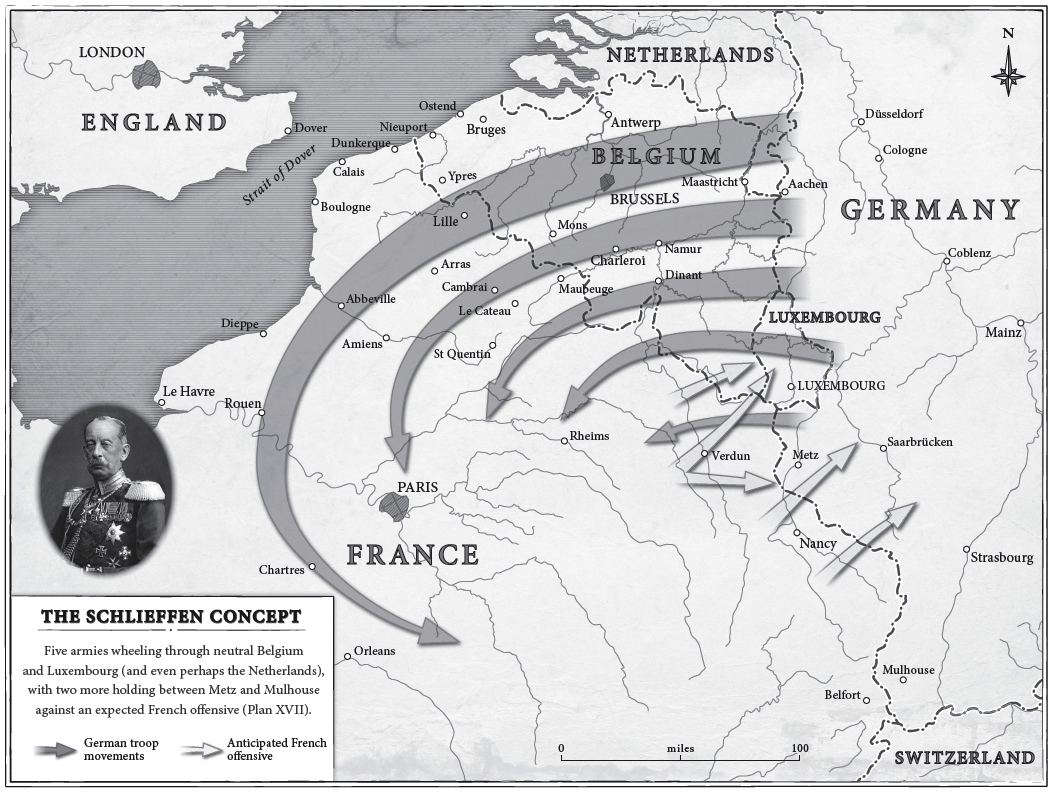
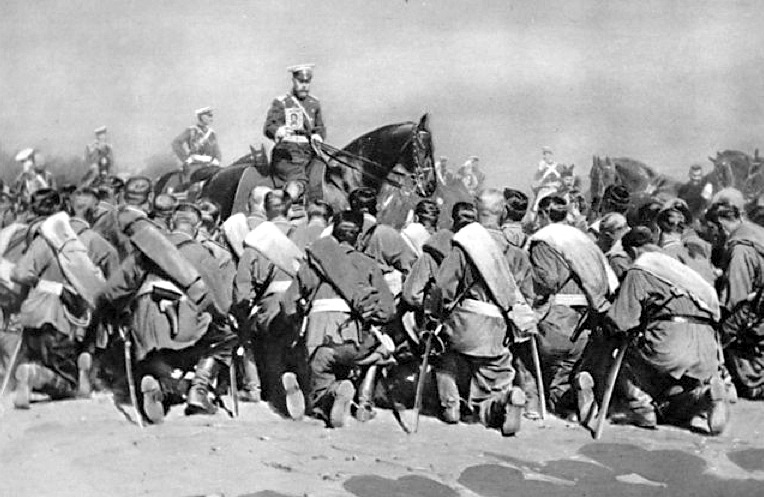

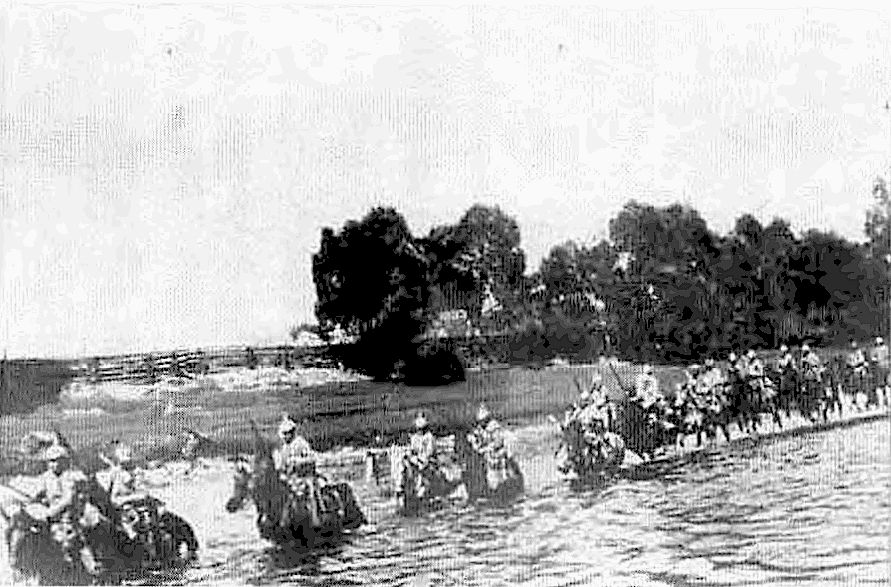
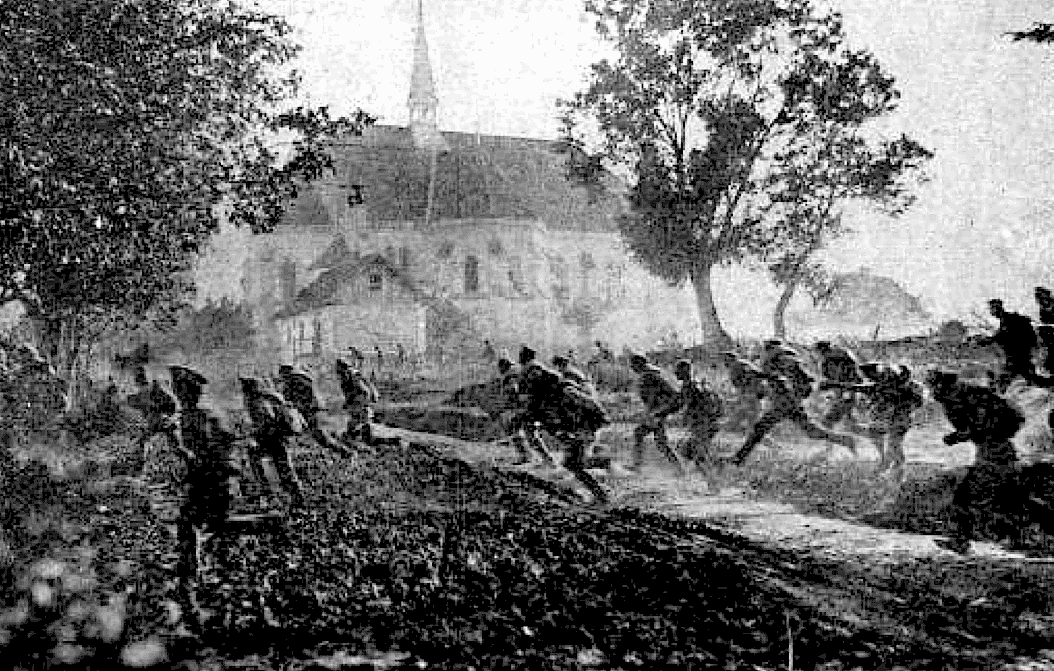
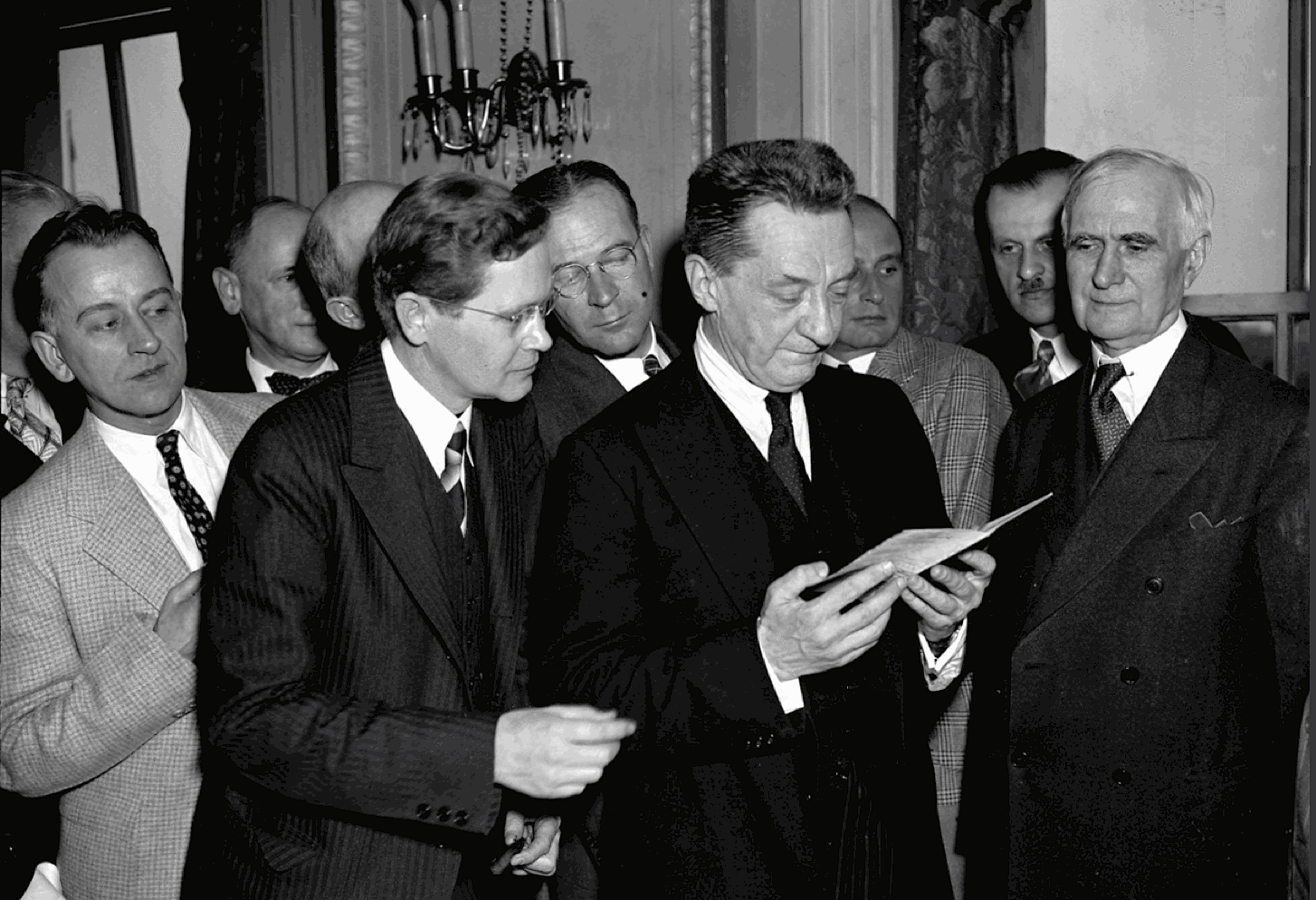
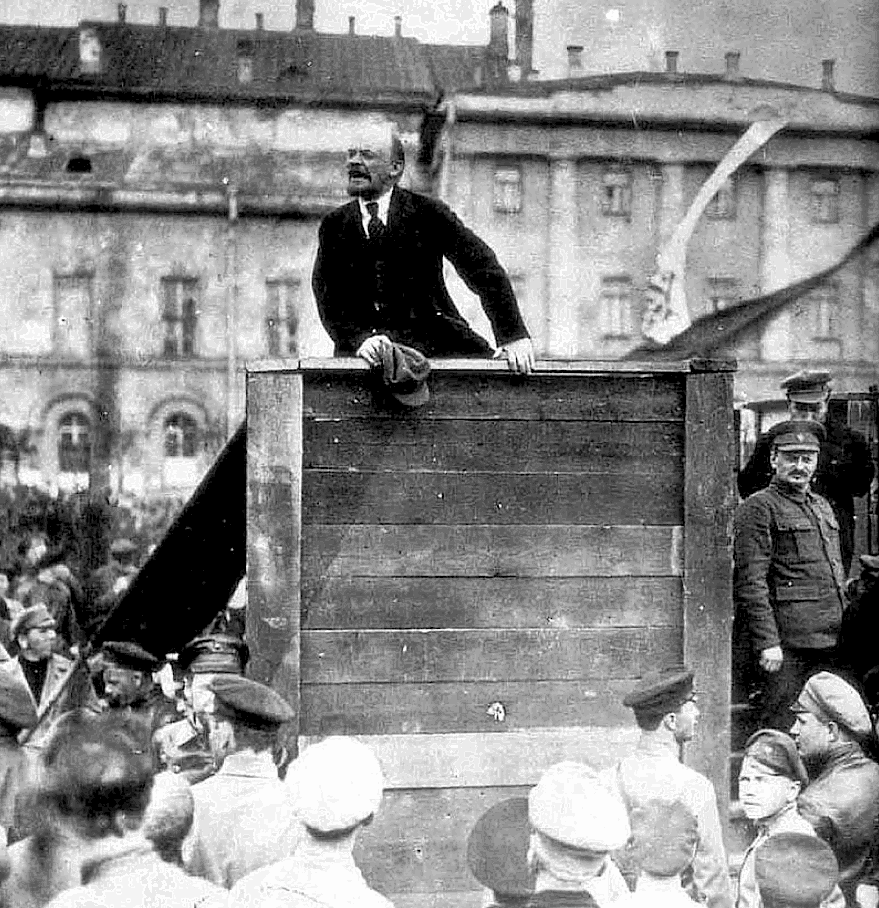
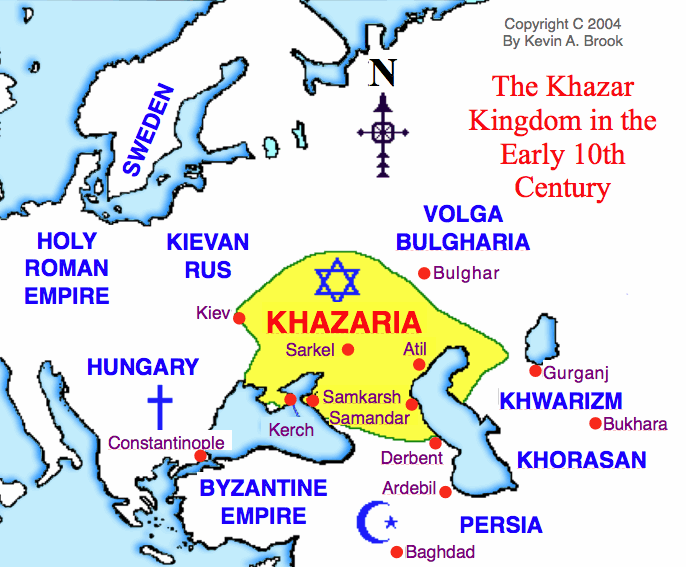
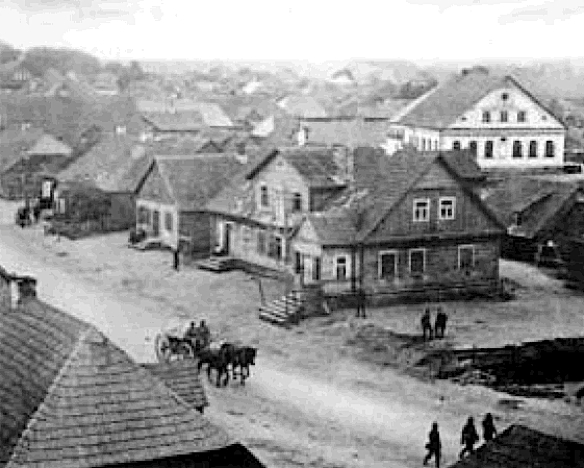
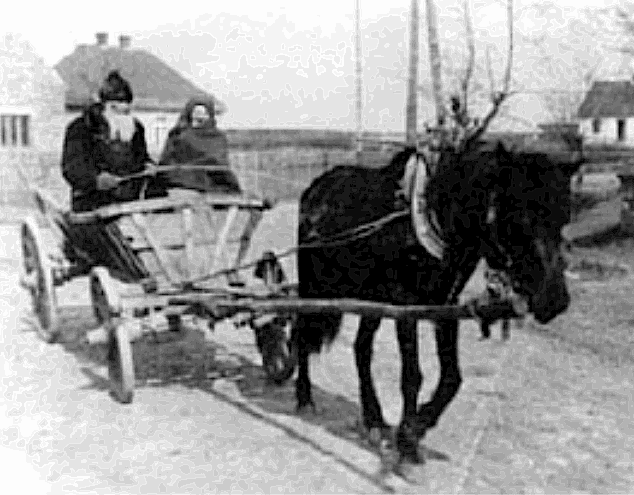
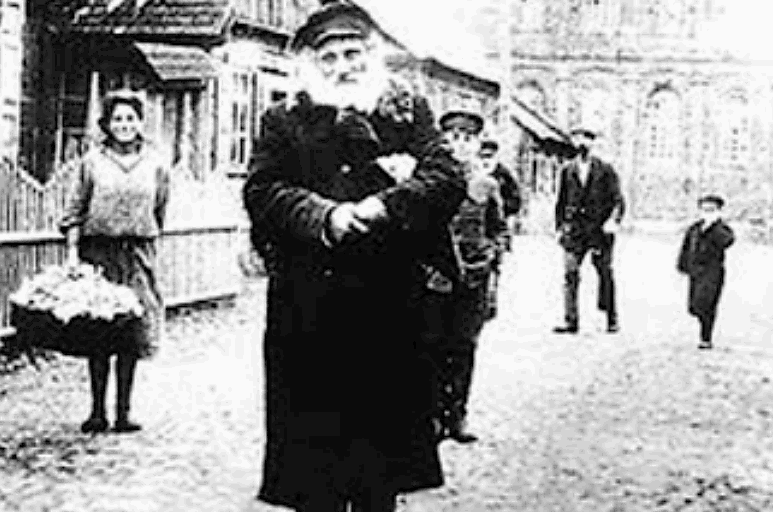
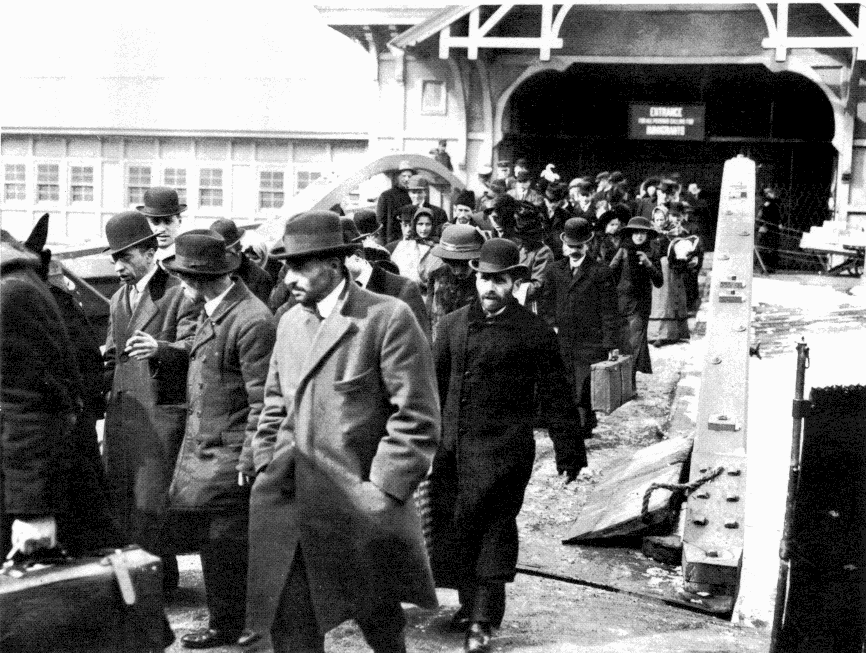
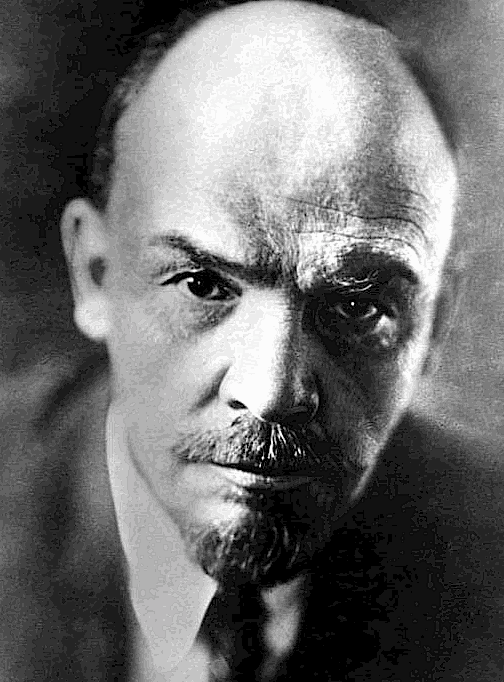
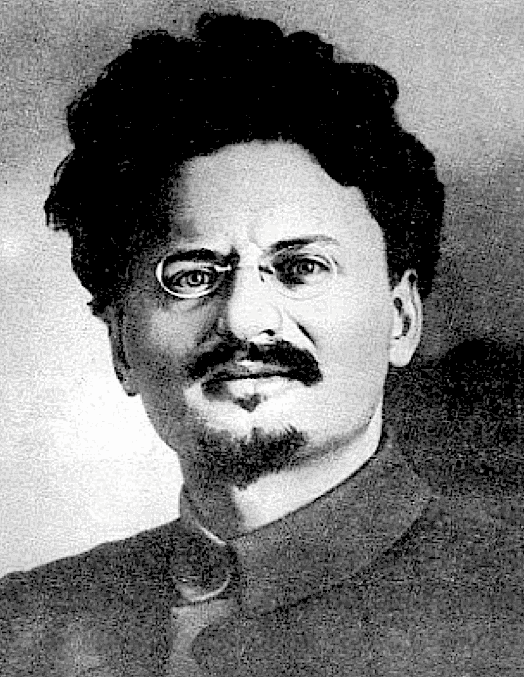

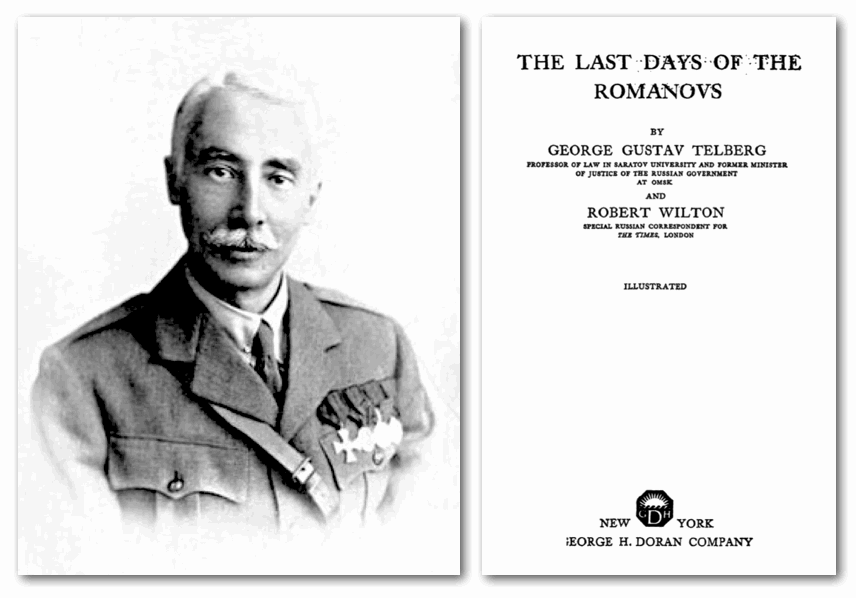
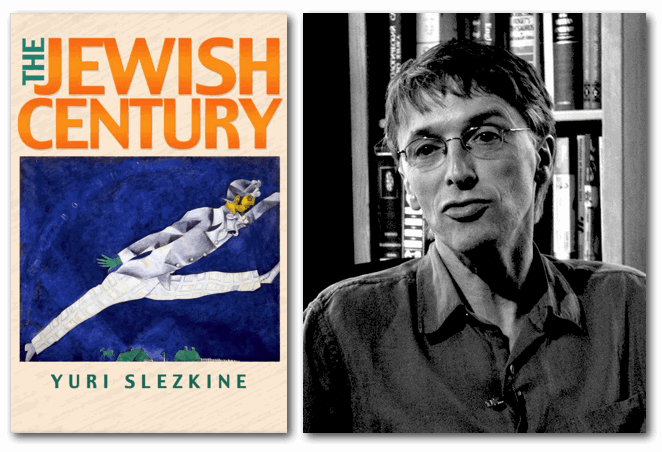
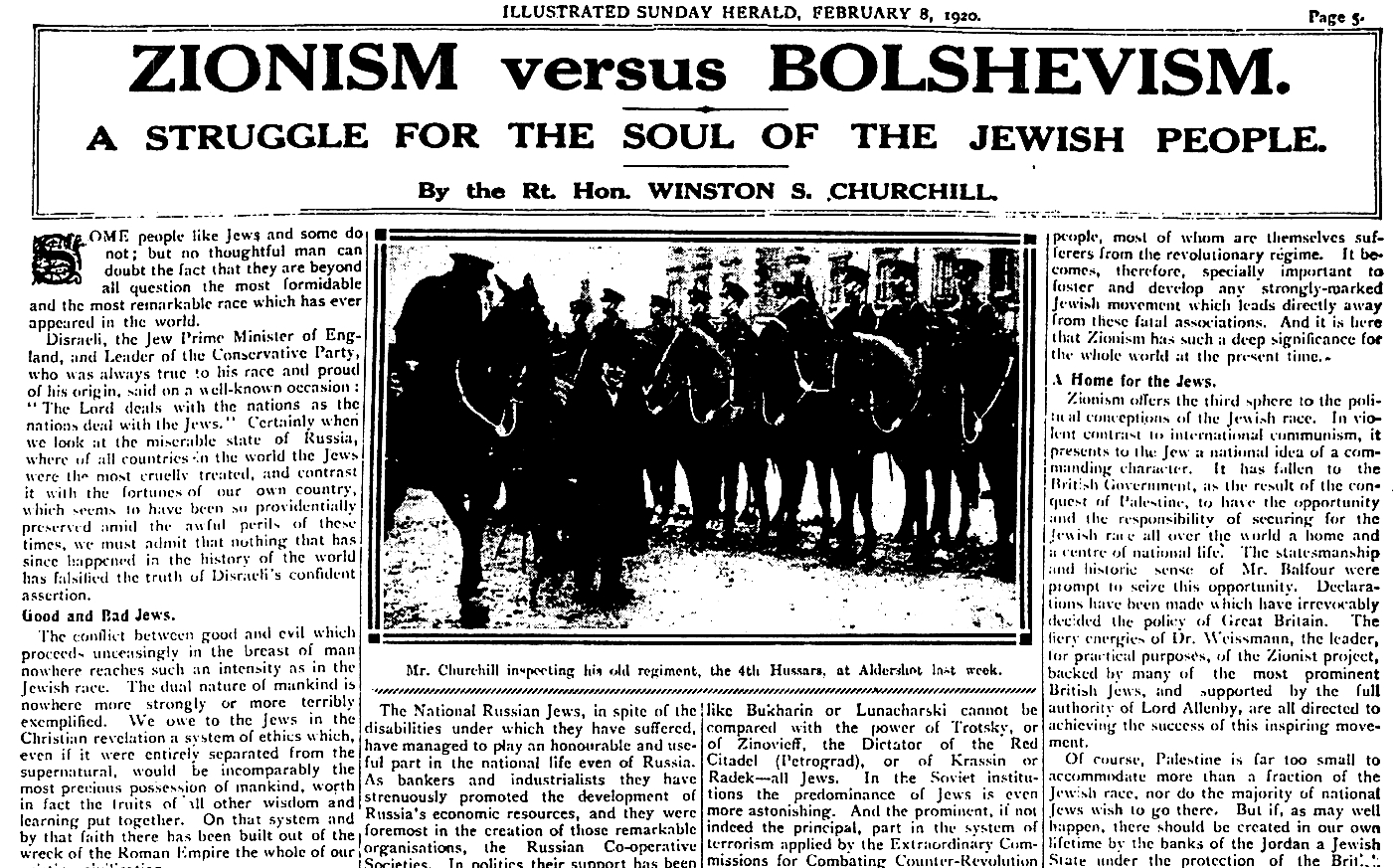


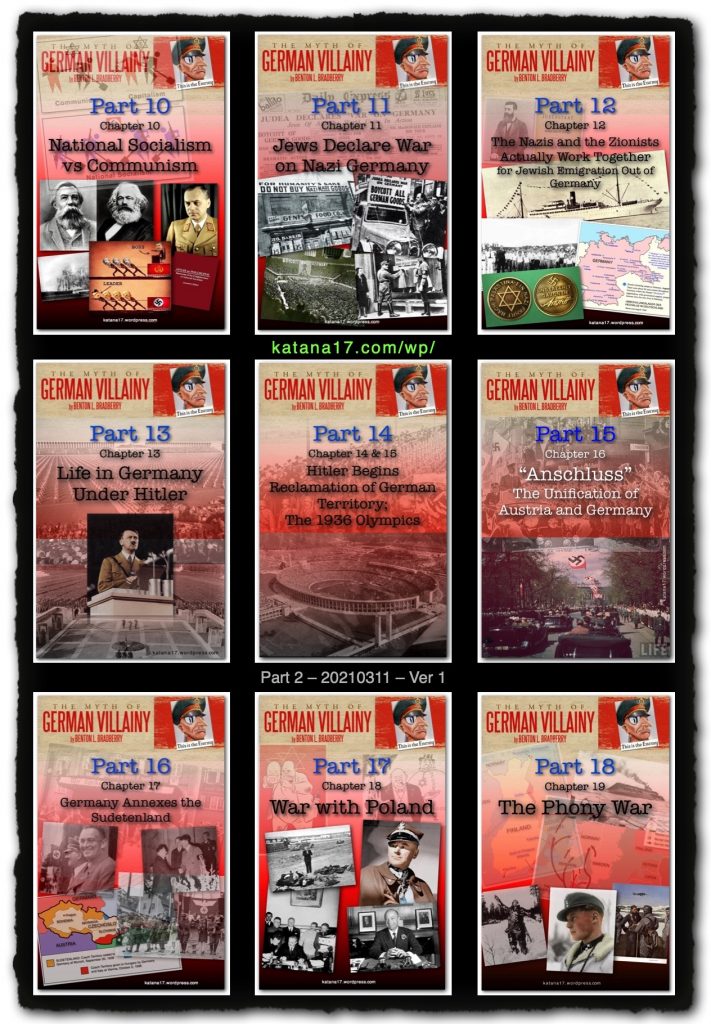
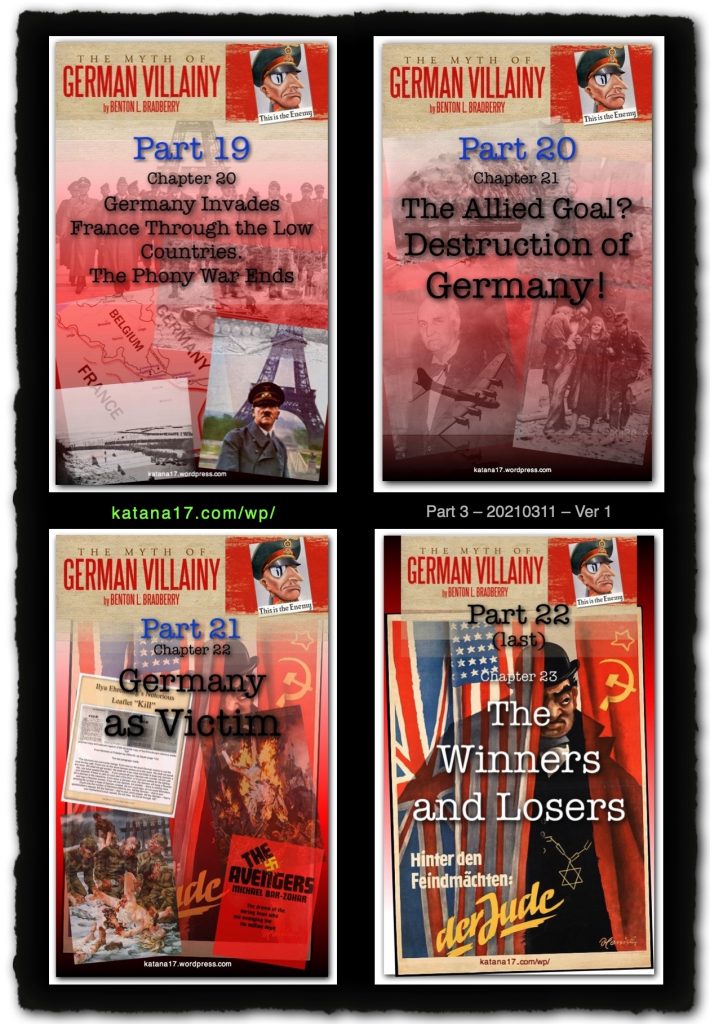
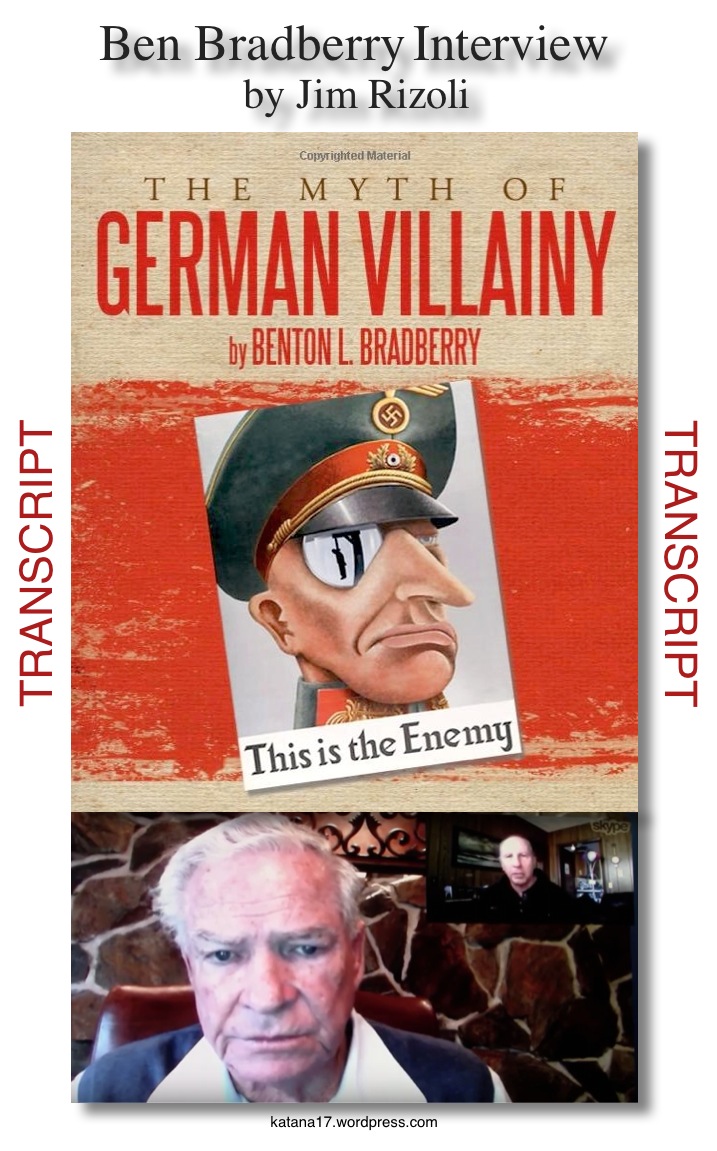
Pingback: 100 let oktobrske revolucije: Kdo je financiral in vodil rdeči teror? | Kavarna Hayek
Pingback: Book - The Myth of German Villainy - Part 08 - Jews in Weimar Germany - katana17katana17
Pingback: Book - The Myth of German Villainy - Part 02 - Aftermath of the War in Germany - katana17katana17
Pingback: Book - The Myth of German Villainy by Benton Bradberry - Part 01 - katana17katana17
Pingback: Book - The Myth of German Villainy - Part 22 (last) - Winners and Losers - katana17katana17
Pingback: Book - The Myth of German Villainy - Part 21 - Germany as Victim - katana17katana17
Pingback: Book - The Myth of German Villainy - Part 03 - The Jewish Factor in the War - katana17katana17
Pingback: Book - The Myth of German Villainy - Part 05 - The Red Terror - katana17katana17
Pingback: Book - The Myth of German Villainy - Part 06 - The Bolshevik Revolution Spreads throughout Europe - katana17katana17
Pingback: Book – The Myth of German Villainy – Part 16 – Germany Annexes the Sudetenland | katana17
Pingback: Book – The Myth of German Villainy – Part 17 – War with Poland | katana17
Pingback: Joel Davis – WWII Revisionism Re-enters the Mainstream – Sep 6, 2024 – Transcript | katana17